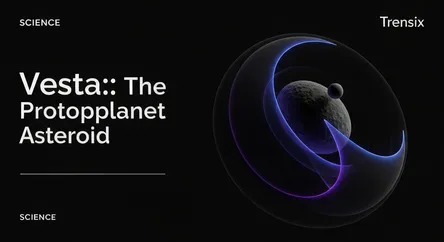Science
Vesta: The Protoplanet Asteroid

Discover Vesta, the second-largest asteroid and a surviving protoplanet. Learn how this solar system relic helps us understand how planets form.
What is it?
4 Vesta is the second-most-massive object in the asteroid belt between Mars and Jupiter. It's not a typical asteroid but a protoplanet—a remnant building block from the early solar system that never fully formed into a planet. Vesta has a differentiated interior with a core, mantle, and crust, similar to Earth. Its surface is remarkably bright and is dominated by a colossal impact crater near its south pole, Rheasilvia, which measures about 500 kilometers (310 miles) across, providing a window into its internal layers.
Why is it trending?
Vesta remains a focal point in planetary science thanks to NASA's Dawn mission, which orbited it in 2011-2012. The data returned by Dawn is still being analyzed, yielding new discoveries about planetary formation and the early solar system's environment. As one of the few surviving protoplanets, Vesta offers a pristine glimpse into the violent processes that built rocky worlds. New research papers continually emerge from this data, keeping this unique asteroid in the scientific spotlight and refining our understanding of how planets are born.
How does it affect people?
Studying Vesta directly enhances our knowledge of Earth's origins. It acts as a time capsule, holding clues about the initial conditions of our solar system. A specific family of meteorites found on Earth, known as HED meteorites, has been traced back to Vesta. These fragments, blasted off by ancient impacts, provide tangible samples for laboratory analysis. By examining them, scientists can better understand the materials and processes that formed terrestrial planets like our own, deepening our connection to our cosmic history.